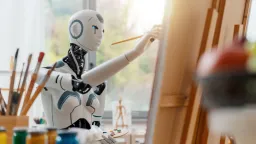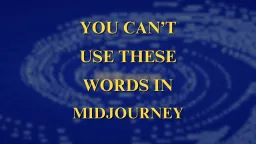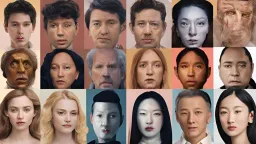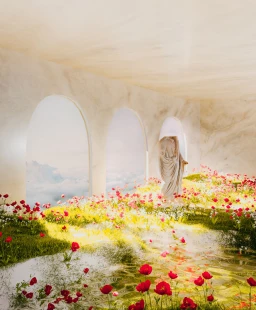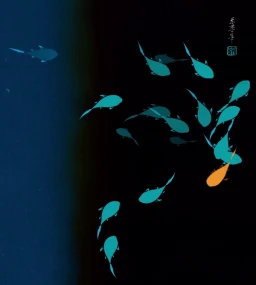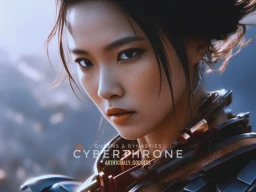Clara Peh on The Birth of the NFT Arts Scene
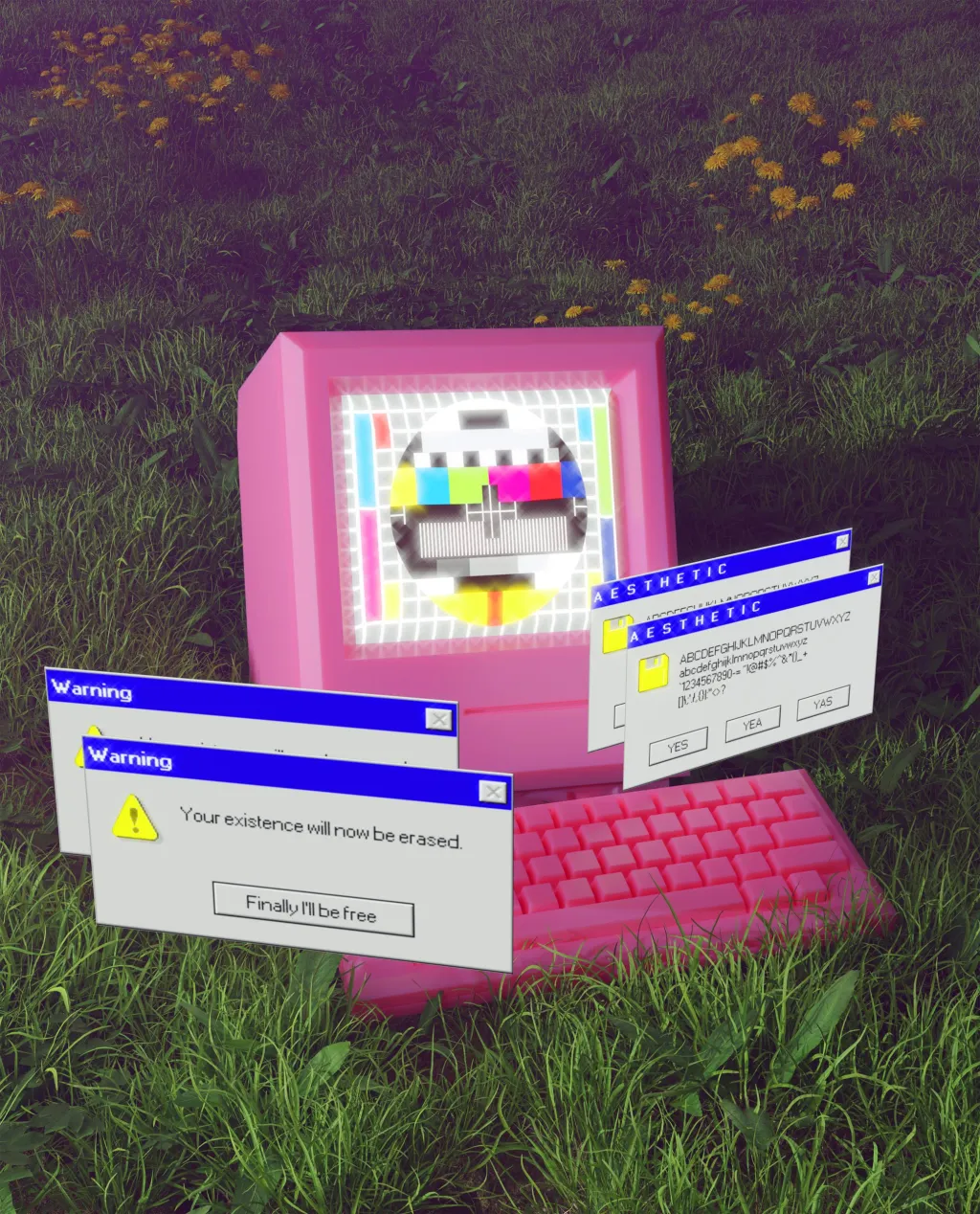
Above Holikpc: Old Computer (Copyright © Holikpc, 2020)
Beyond just hype, NFTs are precipitating a new approach to art and changing art communities.
NFTs are everywhere. A quick scroll through the contemporary Twitter-verse returns a world utterly transformed by their proliferation. It’s gotten surprisingly difficult to find communities of digital artists that haven’t already had some contact with Non-Fungible Tokens. In artists’ bios, links to Foundation accounts and minted OpenSea pieces are commonplace. It’s a sign of the remarkable way that they’re changing the online economy. NFTs are even seeping into physical reality, infiltrating the hallowed halls of old titans of industry like Christie’s and Vogue.
And yet there’s another conversation that must be had about this brave new world.
For all the attention galvanised by the Beeple auction of $69 million dollar fame, 5 months later the wider public still remains mostly none-the-wiser to the significance or even existence of NFTs. The recency of the public eye on this sphere means that understanding of the goings-on within continue to be embedded in small tech and art circles. So, what exactly is going on? And how is the NFT space itself changing?
One common view at the moment sees the NFT and high art spaces as binaries on a scale. On one hand, you have the traditional concept-driven upper crusts who are the mainstay of magazines, forums, and interviews. And on the other — profit-motivated investors willing to commodify their craft by abandoning originality for creating collectibles. While this distinction may elicit the perception that NFTs artists are the rabble of the art world, it’s an assumption that isn’t true.
While this distinction may elicit the perception that NFTs artists are the rabble of the art world, it’s an assumption that isn’t true.
What is true is that NFTs do tend to encourage more business-minded creative practice, although they don’t necessarily give birth to speculative economies.
Decentralised platforms like Hic et Nunc provide an alternative to other gatekept and expensive marketplaces by minting at lower prices. The Tezos blockchain on which it runs mints artworks at just 30 American cents apiece. These then go on to be listed at on average $16 USD, essentially extricating them from most of the investment-minded decision-making that expensive Ethereum-minted works influence.
From this, a vibrant community has emerged, with an openness exemplified by the spirit of #OBJKT4OBJKT. The initiative in March this year spurred interest in collecting NFTs and discovering artists on the platform through a free NFT exchange exercise.
As NFTs gain momentum, there’s also a gradual diversification of the space as more voices from the traditional art world come to the table. NFT Asia is one such community that straddles the line between the traditional and NFT art spaces. The Discord based collective is a recent coming-together of Asian artists and curators from both scenes that brings a surprisingly traditional framing to NFTs. Robust discussions about the vulnerabilities of the Ethereum blockchain go hand-in-hand with debates on the meaning of post-Internet Art and news on artist Antony Gormley.
Clara Che Wei Peh is the founder of NFT Asia, and a curator and writer for multiple establishments including Appetite and Hyperallergic. A graduate of liberal arts college Yale-NUS with a masters in art history and curatorial experience to boot, she comes from a background steeped in the erudition of the art elite.
Over an hour-long call, we discussed her journey into the NFT space, their practical and communal implications, as well as the future relationship between the traditional and NFT art worlds.
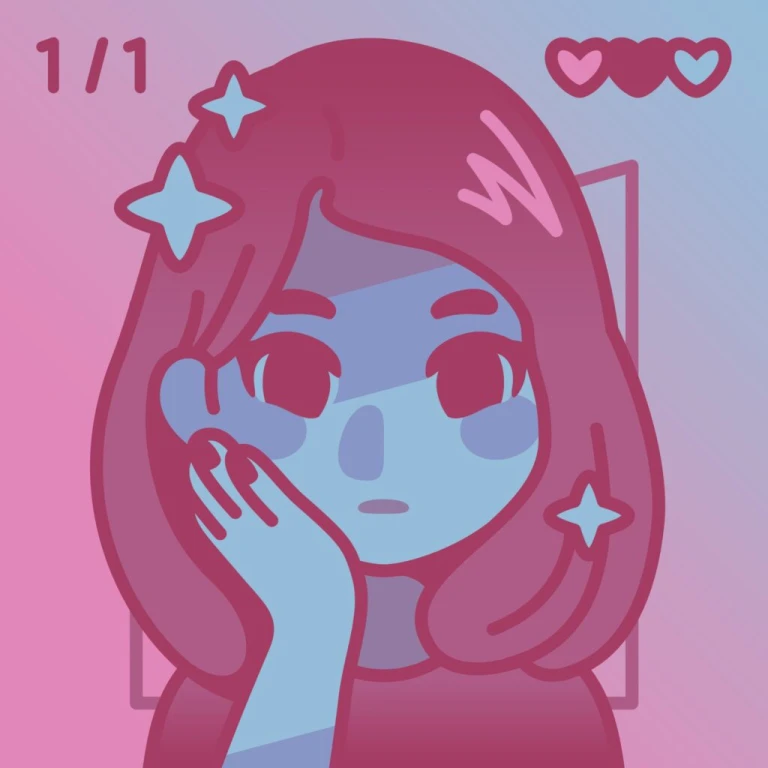
Above Loredangoo: Clara Portrait (Copyright © Loredangoo, 2020)
Can you tell us about who you are, what you currently do, and how you became entwined in the NFT world?
Clara Peh: I work in Appetite Singapore which is the Research and Development arm of Restaurant Nouri. It’s a multi-concept space that’s an R&D kitchen, art gallery, as well as a record bar. I’m the Art Lead there and curate and run the exhibitions and art-related programmes. It’s very experimental and we collaborate with artists from contrasting practices. We’ve worked together with technologists, sound artists, even theatre practitioners. In fact, we’re actually in the works of an NFT drop ourselves as another experiment! I also lecture at Lasalle on an adjunct basis teaching visual analysis and supervising dissertations, but my freelance work is how I got into NFTs.
While writing exhibition reviews and interviews for different art platforms in February, I got the opportunity to write about NFTs. I had heard of them the year before in September 2020 but wasn’t very interested because the scene back then felt focused on collectibles. It took a while, but I started paying attention when I realised that this was an emerging technology and really beginning to influence art practices.
So, I was reaching out to Asian artists because the article was about NFTs in Southeast Asia. While at the time there were already some NFT artists who had become successful in their own right like Speak Cryptic, it was still difficult for me to locate them. When I finally did, I realised that a lot of them felt overwhelmed by the sheer volume of things to learn in order to get into NFTs. You have to be fluent in cryptocurrency, learn about wallets — all these things take time and energy.
It took a while, but I started paying attention when I realised that this was an emerging technology and really beginning to influence art practices.
The crypto-space also has a dramatically different timeline than the art space, and the people work with time in different ways. When there were NFT drops or events on Twitter and Clubhouse in US or European time zones, Asian artists would have to wake up in the middle of the night to participate. There was also a lack of representation and emphasis on Asian and Asia-based artists. It left everyone in the scene feeling a bit overwhelmed and lonely.
I think that’s when we realized that since we were feeling all these things that we should just get together and share resources. That’s kind of how NFT Asia started — it was this very innocent idea that we just needed to be in the same room, or same chat room. Once we created the server, things just accelerated.
In the NFT sphere there also aren’t many people who come from an art history background, or who have a curatorial practice independent of NFTs. You don’t even see a lot of people who have art knowledge write about NFT art. So, I felt that I needed to claim space because the people who participate in this conversation in its early days have the power and agency to shape it. If people like me can bring in different perspectives from the traditional art world, I think we can help nourish the NFT space and make it something vibrant and healthy, rather than just purely art as an investment.
That’s kind of how NFT Asia started — it was this very innocent idea that we just needed to be in the same room, or same chat room
In my own capacity, I’ve been writing about NFTs for arts-focused platforms. People in the traditional art world are very curious about NFTs, but because the barriers to understanding are quite high, they don’t see its potential beyond a “digital certificate of authenticity”. Running NFT Asia is really helping me to have discussions to demystify exactly how NFTs work and talk about the cool things happening here that collectors can consider before they jump right in.
So, I’ve been straddling these two worlds. If it’s like a little Venn diagram, I guess I’m trying to sit within the intersection.
You come from the traditional art world and you’re experienced with the art market and communities.
In a previous interview you conducted with ART SG Advisory Group member Jehan Chu, he talked about how “there is something different about NFT artists, many of whom have a digital-native practice but are re-inventing their use of digital tools”.
On that note, what have you found remarkable about digital art communities compared to traditional ones community-wise?
Clara Peh: I think because NFTs are fundamentally a transactional tool, they facilitate a lot more openness surrounding the market. Artists openly talk about: my price floor, or my pricing strategy. They discuss how they plan to maintain their brand for collectors who are buying their NFTs as investment. These parallel conversations take place in the traditional art world too, but we’re not as comfortable talking about money— it’s just a different culture.
In terms of community building like with NFT Asia, for example, it’s kind of like Facebook communities, just advanced. You can have a lot more random conversations if you’re hanging out on voice chat. We play game nights every Monday on NFT Asia, just Jackbox games, to bond and hang out!
NFTs are also almost a purely digital experience. You mint the work digitally, you view it digitally, and then you can buy and keep it digitally. I think that combined with this particular moment where so many of us are still in heightened restrictions is why this exchange is a closed loop within the digital space.
But because of this, there’s a lot more coders and developers who are involved in the conversation. I wrote a piece about Hic Et Nunc for Hyperallergic, it’s an open-source project where artists and tech-specialists are working really closely together because the environment has facilitated that common working space.
It’s different in a physical and traditional art space like in my day job, for example, where I don’t learn how AI works and I don’t have as many opportunities to talk to AI researchers and developers. In the NFT space, because we’re brought together by a mutual interest in NFTs and in emerging technology, conversations naturally happen. They often have a similar goal as well, which is to help the NFT space thrive.
I think because NFTs are fundamentally a transactional tool, they facilitate a lot more openness surrounding the market. Artists openly talk about: my price floor, or my pricing strategy.
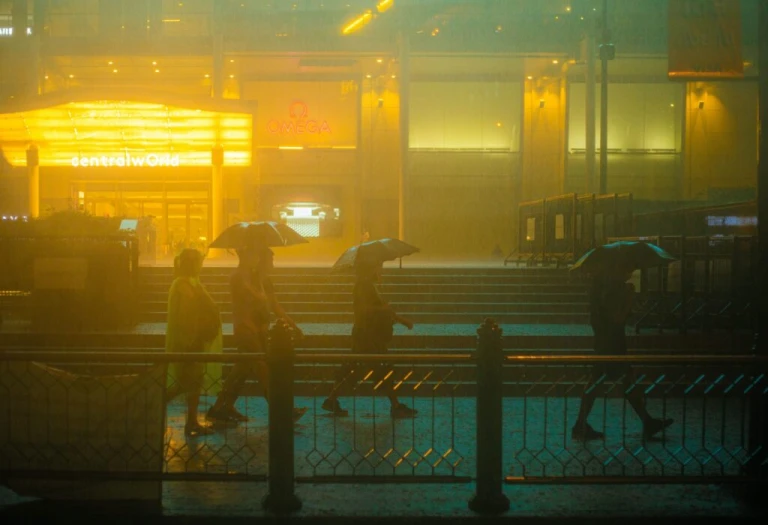
Above Gumpoong: BANGKOK IN THE RAIN (Copyright © Gumpoong, 2020)
We’ve talked about how NFT artists being invested in new emerging technologies is also tied to their interest in the digital. I wanted to get your opinion on whether or not this is more of a cleft between young artists and older artists rather than innovation versus traditionalism.
Clara Peh: I don’t think that’s true because I’ve seen artists from 16 to 60 years old working with NFTs, and some of them are experienced artists with very established practices. I think it’s more of an inclination towards NFTs as a tool and a platform. People like myself see this as something that’s just not going away because it has directed a shift in the paradigms of how we regard creative economy.
Some people love it, some people hate it, but it’s hard to deny that now you can look at a JPEG and think: I could make money off of this, whereas previously that wasn’t even a consideration.
I think some established artists are looking at NFTs because they’re interested in engaging with this nascent ecosystem and curious about how it’s developing, but also wanting to contribute to it. It comes back to what we were talking about earlier — if something is happening and you don’t get into it, you don’t have control over how it develops. And then once it’s matured, that’s too late to shape its culture.
“Some people love it, some people hate it, but it’s hard to deny that now you can look at a JPEG and think: I could make money off of this, whereas previously that wasn’t even a consideration.”
You were saying that NFTs are reshaping the economy. From what you’ve seen, what has been the immediate impact of NFTs on artists? And where do you see this going in terms of the evolution of NFTs’ consequences on the wider art market and economy?
Clara Peh: I think the biggest one is that artists and creatives coming from non-traditional — not high art backgrounds — are being recognised for their craft and talent. It’s artists like character designers for video games, illustrators, communications designers, experimental photographers, basically people weren’t previously integrated into the fine art milieu. And that’s not the most accessible space in the world.
I think they’re finding places for themselves within the NFT ecosystem because theoretically anyone can mint and put their work out there. It’s also allowing people to feel like there are more avenues to show their work, have an audience, and to engage with people in the position of being an artist. Of course, it comes with its own baggage and set of questions to think about. You have to market yourself on Twitter as an artist and protect your brand. But at the same time, you also have this freedom to proclaim yourself an artist in the business of creating art.
I think it’s interesting that there’s a lot of emphasis on online presence. It’s quite normal to have a Linktree and multiple social media accounts. With traditional artists, that’s not always the case.
Clara Peh: I think the ways that NFT artists reach their audience and collectors are very different from traditional artists, especially artists with gallery representation. For them, getting exhibitions and being introduced to collectors isn’t something they have to think so much about because their gallery does that for them, or coaches them through the process.
With NFTs, there’s this idea of decentralisation and open-access — anyone can mint. But then you have to protect your brand and put yourself out there, or else who is going to do it for you? It’s honestly such a challenge because you have to spend a lot of time learning, for example, how Twitter algorithms work, and how to network digitally.
I was wondering if you could elaborate on what exactly decentralisation means?
Clara Peh: Sure, I think most people agree that art institutions can be a bit stubborn. Since they’ve been around for so long, they carry around some historical baggage. That’s a very different energy, and again, a very different timeline than tech-opportunism.
So, I think there’s a lot of resistance from the traditional art world. But it’s not necessarily bad because I do think that they’re engaging with a slightly different audience. And I think it’s okay to be a bit more deliberative before you jump into a new technology. Experimentation and innovation are great, but for a large institution which answers to many different stakeholders I think you have to consider how NFTs are going to play out.
And it’s not that traditional institutions haven’t embraced NFTs either, because every day you see someone new jumping into NFTs. König Galerie, which is so established, has been working with NFTs since March. Then you have the Uffizi gallery which has minted works by Michelangelo from its collection to fundraise. So, there are such innovations, trials and projects to see exactly how NFTs can be embraced. But the apprehension also comes because a lot of people are still grappling with what blockchain is since it’s so intangible.
Then you have the Uffizi gallery which has minted works by Michelangelo from its collection to fundraise. So, there are such innovations, trials and projects to see exactly how NFTs can be embraced.
You also have to understand cryptocurrency and learn to embrace the volatility and risks that come with it. Only then do you finally get to NFTs. So, people have to slowly come to terms with whether they want to work with them or not.
It’s also valuable asking whether you need to work with NFTs. If you’re not able to add anything to your work through it being an NFT then why would you work with them? That’s not to say that you shouldn’t work with NFTs just because of that. It’s one of the different ways that exists to put your work out there and help sell it. It doesn’t have to be the be all end all.
We’re talking about NFT artists who —compared to traditional artists — have a lot more control over their audience, and hence, lot more responsibility. Given this, where do you see the role of galleries changing, and what do you think, or hope it will be in the coming future?
Clara Peh: That’s a question which is slowly playing out. In the earlier days back in April, everyone was like, we’re cutting out the middleman! Goodbye galleries, no more 50% commission. But in these recent weeks, I’ve been seeing more artists who are getting tired of constantly marketing themselves because it’s prohibiting them from focusing on their own work.
I think galleries exist for a reason. If it were so efficient for artists to get connected to collectors, find exhibitions that they should be in, or put themselves out there, then galleries wouldn’t be able to survive. Galleries have been around for some time, and that’s probably because they bring something to the table, and value to the ecosystem. It’s not about taking 30% Commission and doing nothing about it. Consider also that some marketplaces actually function like galleries. They might take 15% Commission but without supporting artists in the way that galleries might, so artists are now having to learn by themselves.
I gave a workshop in NFT Asia about how to write your bio, and it’s not that I’ve written that many artists’ bios before, it’s just that no one else is having this conversation. But artists have to put a bio because when they mint something they need to write a description. Especially when you’re one of those artists that we’ve talked about not coming from a traditional art background, this is a new challenge for them.
Sometimes they don’t have the expertise and skills, or even know where to look for resources to do these things. These are all things that are needed in the NFT space and people are now realising and looking for ways to build on this. That’s why I have no idea how the gallery system will evolve because I definitely think that they exist for a reason and that reason is also present in the NFT space.
To jump back to one of the earlier questions we wanted to ask: In your own words, how would you describe what NFTs are?
Clara Peh: I mean, I think we all know! It’s this unique digital token that exists on the Blockchain, where the artwork is stored. It’s the metadata of the token. Its transactions can be recorded, tracked, it’s transparent and immutable.
But one of the distinctions I would add on top the generic NFT description is that for the most part, it’s a tool, not necessarily a medium.
So, if you create a photo manipulation and then you mint the JPEG, the medium is the photo or digital process. The NFT is the tool through which you put your work out there and allows you to sell it digitally and securely using Blockchain. The medium is what people use to create the work.
So, for most NFT works, an NFT is only the transactional tool. But the NFT itself can be the medium too. In some cases, a work couldn’t exist in its current form without it being an NFT. You can actually play with its nature of being an NFT, for example, by doing something with the smart contract, allowing the work to mutate depending on interactions to the token.
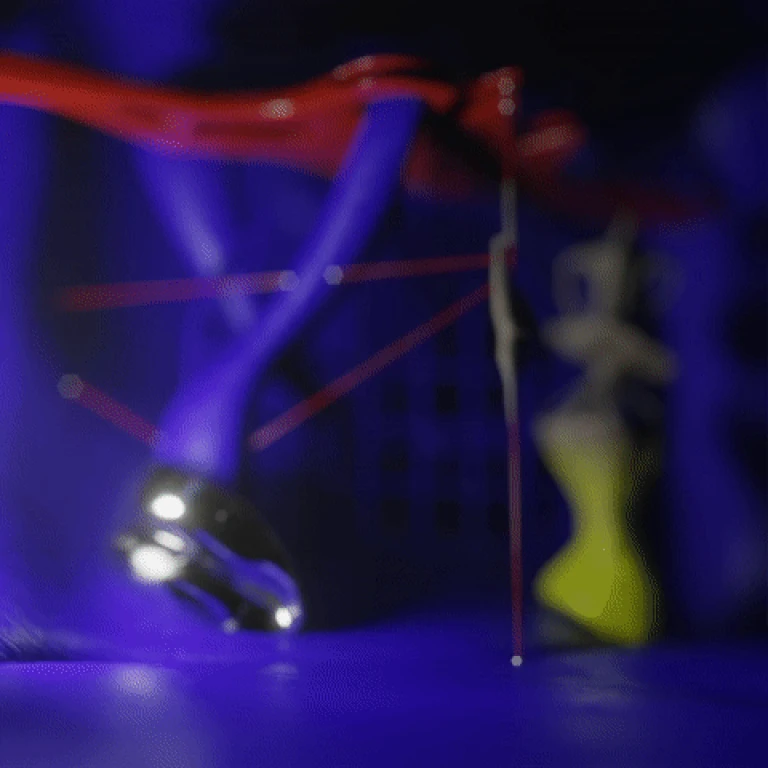
Above Loreng: Fantastic Nocturnal Exhibition of Reservoir Chair (Copyright © Loreng, Collected by Dettytoski, 2021)
I wanted to talk about the impact of NFTs again. At the moment NFTs seem to be taking the world by storm in creating perceived value in the digital realm where it was tenuous before.
What do you think about reintroducing physical elements to NFT art? Do you think that this undermines the spirit of NFT art?
Clara Peh: Before that, I think it’s so important to preface that one should also be critical of the fact that NFTs are introducing monetary value and ways to quantify digital content. There’s something to be said about how things were freely accessible and could have been truly owned by all, and now we’re introducing barriers. And sure, it introduces more protection and much more ability for artists to claim stake over their work — that’s super important — but this is also something big to grapple with.
So, on to the issue of physicality. I actually think having a physical element or tactile dimension to a purely digital work is really interesting, and I don’t think it takes away from NFT art because the NFT in itself is only a tool.
Yes, digitally native work like Mario Klingemann’s, for example, really shines because you see why using this tool is so innovative, and how his work could not have been done without the NFT token. That really helps to cement the significance of NFTs.
But also — and this isn’t unique to NFTs — all digital works have to deal with the interests of collectors.
All digital works have to deal with the interests of collectors.
I did an interview with Jehan Chu for ArtSG that focused more on his collecting vision. He runs a blockchain fund, was one of the first few people in Ethereum, and is a big collector. So, he understands both blockchain and art. But even for him when he’s collecting something, one of the questions he asks is: how do I want to live with this work? How can this work fit into my space? And most collectors out there are still thinking of these questions.
That’s why digital art has been more difficult to collect because we’re still getting to know ways to display and store digital works. When NFT works can have that physical element, it helps you take that experience also into your physical space. I know we’re all about moving into the metaverse but we still live in our corporeal bodies and inhabit critical spaces.
You’ve written about the Virtual Niche exhibition in Beijing which was the first large scale physical NFT exhibition. Could you comment on the importance of something like that for NFT art?
Clara Peh: I’m always cautious when saying something is the first because that’s how it’s talked about but I know there have been other attempts to show NFT works physically in different kinds of spaces.
But to answer the question, I think the first thing is that for people who haven’t interacted with NFTs digitally or know about blockchain, it gives them the opportunity to do so in a way that’s more accessible. Because we may not all understand going to an NFT marketplace to look at a work, or enjoy digitally viewing it from our homes, but people are used enough to the idea of seeing something in a gallery to spend time to understand and appreciate it.
Secondly, I think it introduces more narrative and curated thought to the NFT space. Most NFTs are put out on different platforms where there are so many to begin with, and then they’re just lost on the vast, vast Twitterverse. I follow maybe less than 500 people, and that’s all I see. I wouldn’t know how they compare to all the artists out there that I haven’t seen. So how do you really go about understanding how they work and sit in the context of the wider NFT conversation? I think that’s where exhibitions come in to help us do that task. I studied art history so this is the kind of exercise that I’m personally very interested in.
I also think these exhibitions do the work of helping you to understand what are the larger concerns that many NFT artists seem to share.
In particular, I know the Virtual Niche exhibition had a lot of educational elements that weren’t about just the art itself. They used rows of mining computers on display to disentangle the idea of blockchain and demonstrate to people the physical infrastructure that these technologies run on. Because when you say: blockchain is a distributed network of computers. Honestly, what does that even mean?
You’re an art writer and researcher and have a strong interest in NFTs as an emerging technology. Do you think that other art writers should be writing more about them?
Clara Peh: I think that it benefits the NFT ecosystem for more people from art backgrounds to contribute discourse even if they’re critical of NFTs because it introduces different voices of consideration. I’ve seen some curators and art historians who are specialists in digital and internet art, and when they criticise NFTs, it helps me realise that there are precedents to this. You learn that, okay, this is an experiment that might have been done before and we can learn from that and not repeat the same things. It brings in some criticality to consider what is actually beneficial innovation and also slows things down to encourage more thoughtful engagement.
I was reading this Cao Fei catalogue the other day, just randomly, and she had this project called RMB city that ran on Second Life, which is this virtual world. So, RMB city was this big thing that ran for two years, and it was all about virtual community building, interactions and experiments, which is really similar to what metaverse companies are now trying to achieve. And funnily enough, one of the exhibition catalogue essays was called — Here Comes the Metaverse, or something like that. And that was written in like 2008, 13 years ago, so it’s been more than a decade!
I’ve seen some curators and art historians who are specialists in digital and internet art, and when they criticise NFTs, it helps me realise that there are precedents to this.
We already have artists and technologists experimenting with these questions. We can learn from the ways in which people like her conducted their projects, what they achieved through it, and take that to have a more discerning way to then look at how virtual worlds are being developed now.
The gamification of these spaces and the way that people are using digital avatars to interact — these are cultures that have been brewing for some time. But I think for a lot of people who are new to NFTs and are interacting with this virtual world for the first time, this all feels very new and like this is the first time it’s ever happened.
The more artists, writers, researchers, and historians who can bring in this kind of context to support further understanding of how we came to where we are now, the more that helps us to build knowledge and look at things in a considered way.

Above Ninaad Kothawade: Breathe (Copyright © Ninaad Kothawade, 2021)
Editor’s note: I want to thank Clara and members from the NFT Asia community who have worked with us over the past few months and shared their perspectives and opinions with Niftyzone. I’d like to thank also the artists Holikpc, Loredangoo, Gumpoong, Loreng, and Ninaad Kothawade who have agreed to feature their work in this article.
